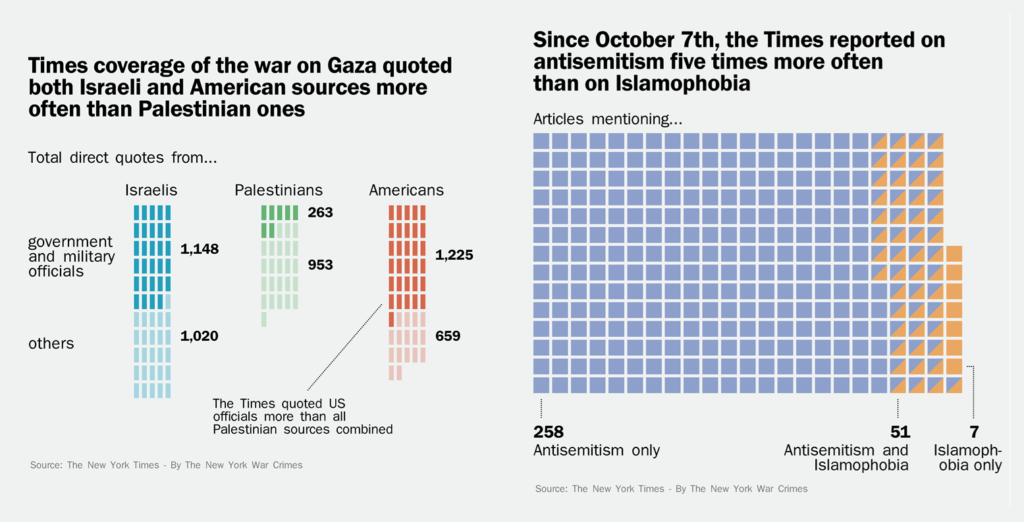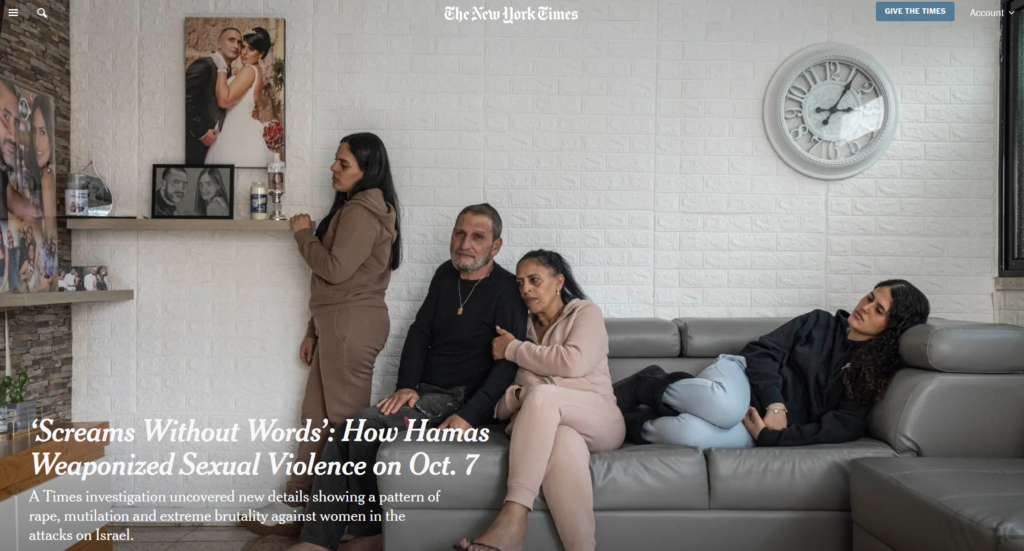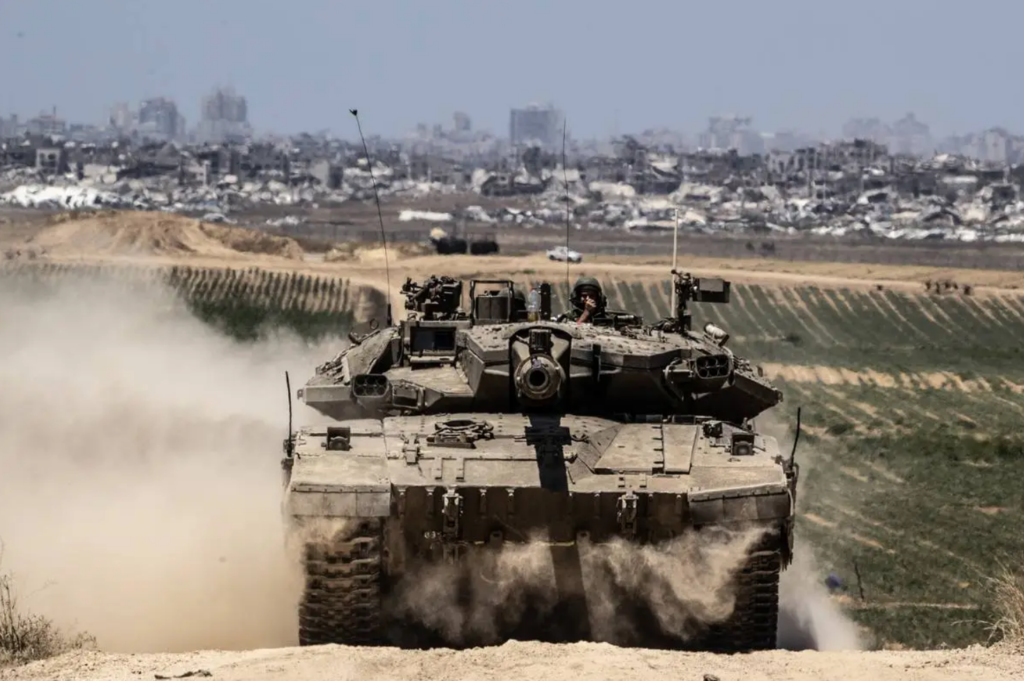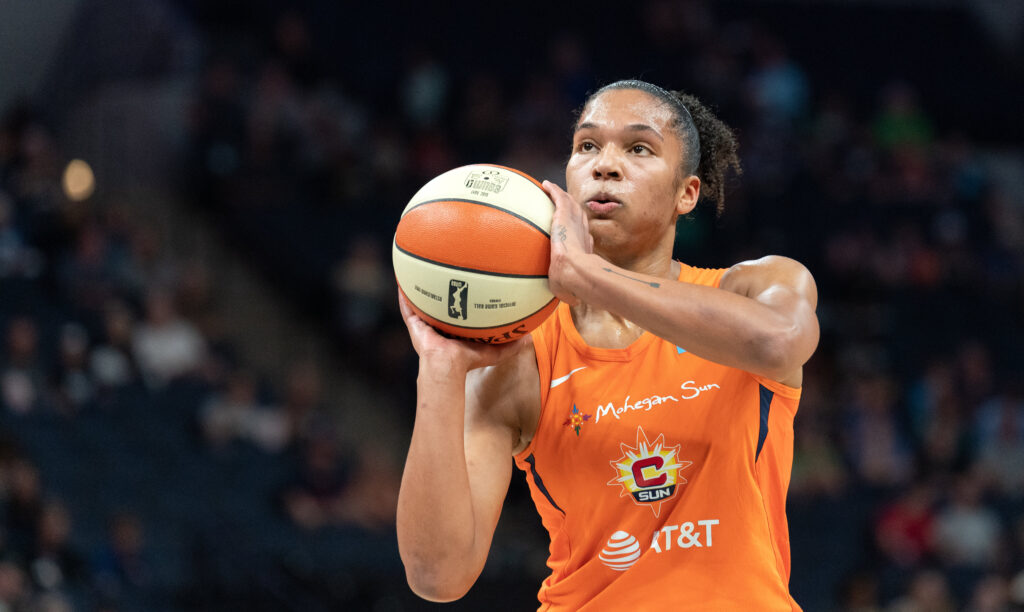The New York Times and other outlets are manufacturing consent for genocide
Taking a brief interlude from my series on women’s basketball to talk about what western mainstream media is doing to obfuscate the horrors of the genocide of Palestinians, and to promote state-sponsored narratives and Zionist rhetoric.
This post came out of a conversation that I was having with my dad about biased reporting by The New York Times, and you’ll see that a lot of what I discuss focuses on the NYT specifically. This is not because the NYT is the only culprit, but because as the U.S.’s supposed “paper of record” it has outsize impact, and it sets the standard and tone that other mainstream news outlets tend to follow and corroborate. None of this is particularly new: the NYT has a long history of manufacturing consent for U.S. imperialism, most famously parroting Bush administration lies about weapons of mass destruction in the lead-up to the U.S. invasion of Iraq in 2003.
But we’re focusing on Palestine today, and how mainstream media in the west prioritizes pro-Israel voices (not only in their commentary and opinion pieces, but in their investigative reporting); carefully uses language that minimizes the harm to Palestinians and removes Israel of complicity; publishes sensational stories about Hamas and Palestinians without corroboration; ignores the targeted killings of Palestinian journalists; and polices their own newsrooms to hound and silence journalists of color, particularly Palestinian, Arab, and Muslim journalists. At the end, I’ll also share media sources that I trust and rely on for staying informed about the genocide and the fight for Palestinian liberation.
Please be aware that this post includes more detailed descriptions of violence than I have previously included in my posts, including violence against children and babies, and sexual violence.
But first, a couple requests.
Mutual Aid Request
Today’s mutual aid request is once again for S, a friend of my dear friend TK. S is living in a horrific abusive housing situation and has overextended themselves to try and make rent, to the detriment of their own health while they are already disabled. They only need $630 more to reach their goal by the end of this week, which will help get S out of their lease, fix their car, and secure new housing to escape their current situation. You can donate to S’s GoFundMe, or send money to TK with the note “For S” on Venmo, CashApp at $torkz428, or Paypal at torkz.
Activism Request
Relevant to today’s topic – on August 8, TIME Magazine published an interview with Israeli Prime Minister Benjamin Netanyahu that normalizes and minimizes the genocide his government is committing against Palestinians in Gaza. Write to TIME demanding they stop giving genocidaires like Netanyahu a platform. You can use this action alert with a sample letter, but please add a few sentences at the top to make it personal, since that is more likely to actually be read.
Israel’s murder of Palestinian journalists should galvanize better western reporting – but it doesn’t
It’s crucial for the western media industry to report fairly, accurately, and justly on this genocide, not only because of the horrors that are being inflicted on all Palestinians, but also because Israel is systematically targeting and murdering Palestinian journalists and their loved ones, no doubt to silence their reporting.
The Committee to Protect Journalists (CPJ) found that Israel killed more journalists in the first ten weeks after October 7 than any entity had killed within an entire year since CPJ began collecting data in 1992. Many of the journalists were killed while doing their jobs, often wearing press vests that are supposed to keep them safe. As of last week, CPJ reported that at least 116 journalists and media workers have been confirmed killed in Israel’s war on Gaza – only two of them Israeli – while dozens more have been injured, reported missing, arrested, threatened, censored, or otherwise harassed by Israeli forces.
The targeting of Palestinian journalists did not begin on October 7: another CPJ report found that the Israeli military has a decades-long pattern of killing journalists with impunity, including the 2022 murder of Shireen Abu Akleh, a highly-respected Palestinian-American journalist for Al Jazeera who was shot in the head by Israeli forces while she was reporting. Fellow journalists who tried to help her were also shot at. During her funeral march two days later, which was attended by thousands of Palestinians, Israeli police beat mourners with batons and fired tear gas.
Throughout all of this, the western media industry not only has failed to stand up for and uplift their Palestinian colleagues – it works to actively suppress pro-Palestinian voices and promote Zionist narratives, even without corroboration.
Anti-Palestine media bias in numbers and words
The organization Writers Against the War on Gaza (WAWOG) has done extensive analysis of the reporting by the NYT, which WAWOG shares in their publication The New York War Crimes. Their computational analysis of the NYT’s coverage of the first five months after October 7 found that the NYT quoted Israeli sources almost twice as often as Palestinian sources, and quoted American government and military officials more often than all Palestinian sources combined. They also reported on antisemitism five times more often than on Islamophobia, and 85% of the time that they did mention Islamophobia, they also mentioned antisemitism.

Media bias also shows up in also how Palestinians are written about. The NYT used passive voice to describe Palestinians 1.7 times more often than Israelis – particularly when it came to naming harm to Palestinians, saying things like Palestinians “were killed” without naming who killed them, which serves to dehumanize Palestinians. Historian Assal Rad unpacks this dynamic specifically when it comes to biased headlines, which she often annotates on her twitter.
This is in stark contrast not only to how Israelis are discussed, but also to how Ukrainians are discussed in relation to Russia’s invasion of their land:
“Words like ‘slaughter,’ ‘massacre’ and ‘carnage’ often convey more emotion than information,” wrote New York Times standards desk editor Susan Wessling in a November 2023 memo to the staff of the “paper of record.” It was over a month into the current U.S.-Israeli war on Gaza. Over 10,000 Palestinians had been martyred by the occupation forces. Congress had voted to send tens of billions more in lethal military aid to the Zionist entity. Wessling added, “Think hard before using [words like ‘slaughter’] in our own voice.”
[…] As anyone who had spent time during the last 18 months in the newsroom well knew, The New York Times has no qualms about emotionally condemning war crimes committed by enemies of the U.S. empire.
“CARNAGE WIDENS AS CEASEFIRE TALKS FALTER” was the front-page headline on March 11, 2022, accompanied by six aerial photos showing Russia’s invasion of Ukraine. On April 5 after Russian forces withdrew from the Kyiv suburb of Bucha, leaving behind dozens of corpses, the front page read, “HORROR GROWS OVER SLAUGHTER IN UKRAINE.”
None of this is new. Western media has for decades been biased against Palestinians, using racist and dehumanizing language, erasing their voices, and normalizing Israeli violence, apartheid, and occupation.
And when journalists in the west do try to correct that bias or speak out about it, they are either met with newsroom policies like the NYT’s; sidelined, like MSNBC did to three of its Muslim anchors the week after October 7 (Ayman Mohyeldin, Ali Velshi, and Mehdi Hasan, who left MSNBC a few months later when his show was cancelled); or forced out, like the NYT Magazine’s Jazmine Hughes was after signing onto a letter condemning Israel’s siege on Gaza.
In fact, the National Writers Union found 44 cases of retaliation against more than 100 western media workers between October 7, 2023 and February 1, 2024 related to the workers expressing solidarity with Palestine or criticism of Israel, while finding no similar trend for pro-Israeli media workers. Three-quarters of the cases involved workers of color; more than a third were specifically Muslims or people of SWANA (southwest Asian and North African, what some call Middle Eastern) origin.
Platforming Zionist propaganda and sensationalism – without corroboration
It’s not just that western mainstream media outlets suppress pro-Palestinian speech: they also routinely platform Israeli propaganda even when it cannot be substantiated, including propagating outright lies.
The rumor that Hamas had beheaded as many as 40 Israeli babies in the Kfar Aza kibbutz on October 7 was circulated widely in news media and on social media, to the point that not only were Israeli politicians repeating it, but on October 9, U.S. President Joe Biden lied about having seen photos of the babies. Biden had not seen any such photos, and in fact, he had ignored guidance from his own staff not to talk about Hamas beheading babies, because such claims were not yet verified.
His staff were right to be cautious. Six months later, an investigation by the Le Monde quoted the Israeli government press office as saying, “There were never 40 decapitated babies Not in Kfar Aza nor in any other kibbutz.” This, of course, only confirmed what Palestinians had been saying all along.
What has been corroborated is Israel’s own violence against babies. Since October 7, the Israeli army has killed at least 2,100 Palestinian babies and toddlers under the age of two, out of the at least 17,000 children murdered – numbers that are likely to be enormous undercounts, given the breakdown of health reporting in Gaza. And those numbers are only the babies directly killed by Israeli forces. At least 34 people, most of whom are children, have already died from starvation and malnutrition, which most of the population of Gaza is at risk of. After Israeli attacks on hospitals, the decomposing bodies of babies have been found in pediatric ICUs. And Palestinian babies may have actually been beheaded, which very few media outlets have reported on.
Another major allegation that spread like wildfire was that Hamas had used rape and sexual violence as weapons of war on October 7. From the beginning, these allegations were known to be unsupported, as even Israeli newspapers like The Times of Israel noted. Yet this rumor persisted, to the point that The New York Times published a front-page feature story on December 31 that appeared to substantiate it, which further galvanized support in the west for Israel’s genocide on Palestinians.

Much of the backlash to this article has focused on the fact that its key on-the-ground reporter – Anat Schwartz, a former Israeli intelligence officer who had no reporting experience prior to October 7, yet was specifically recruited by the NYT for this work – was found to have liked tweets that called Palestinians “human animals” and said that Israel needed to “turn the [Gaza] strip into a slaughterhouse”. But as appalling as Schwartz’s social media history is, the rot in the “Screams Without Words” story goes even deeper. Exposés and analyses by The Intercept and The Feminist Solidarity Network for Palestine, both of which I highly recommend reading in full, document how, at every turn, Schwartz’s reporting found zero concrete evidence of rape used as a weapon of war by Hamas.
In her investigation, Schwartz failed to get confirmation of any instances of sexual assault by Hamas members from people at the kibbutzim targeted on October 7, Israeli hospitals, rape crisis centers, trauma recovery facilities, and sex assault hotlines. There were no first-hand accounts of people who had survived sexual assault by Hamas members, nor was there any concrete physical or forensic evidence of rape, even of Israelis killed by Hamas. All of the reports came from second or third-hand sources, many of whom were Israeli government officials or right-wing extremists who made other false claims that have since been debunked, and all of which had been previously reported in media, belying the NYT’s claim that “Screams Without Words” included new information. And the family of Gal Abdush, an alleged victim of rape who is featured heavily in “Screams Without Words”, said afterwards that the media invented the idea that Abdush had been raped, and that The New York Times interviewed them under false pretenses, not telling them that rape would be the focus of their story.
The NYT reacted to these exposés not with apologies or major corrections, but by conducting a witch-hunt to discover leaks within their newsroom, which, as the union representing NYT employees alleges, included racially targeting employees with SWANA background for their questioning. Despite widespread outcry, including an open letter from more than fifty tenured journalism professors calling for an independent review of the reporting for “Screams Without Words”, the NYT has repeatedly said they stand by the story.
Israel, meanwhile, has long used rape as a weapon of occupation and genocide. Palestinians imprisoned by Israeli forces, even before October 7, faced torture, mistreatment, and sexual violence, including reports from Palestinian children who are frequently sexually abused in detention. In 2021, Israeli authorities reacted to the alleged rape of an imprisoned Palestinian child by banning the NGO that had reported it, raiding their Palestine offices, and declaring them a terrorist entity.
And this has only escalated in the last ten months. An investigation by the Israeli human rights group B’Tselem alleged “repeated use of sexual violence, in varying degrees of severity, by soldiers or prison guards against Palestinian detainees as an additional punitive measure” in Israeli prisons since October 7. And just two weeks ago, video surfaced showing the gang rape of a Palestinian prisoner by Israeli guards at the Sde Teiman prison. When the soldiers were arrested, far-right mobs, some of which included Israeli government ministers, stormed the prison facility in their defense. Other government officials, including National Security Minister Itamar Ben-Gvir, have said such gang rape is permissible in the name of national security.
To be clear, Hamas members or other Palestinians may have committed individual instances of rape and sexual violence on October 7, which, if true, is horrifying. But the entity proven to be using sexual violence as weapon of war and genocide is undoubtedly Israel.
What I’m reading, watching, and listening to instead
A note: the sources I’m sharing do not include any social media accounts simply because I haven’t been on social media as much lately, but there’s no doubt that social media is a key place to hear from Palestinians directly (no thanks to the platforms themselves, which do still try to suppress their voices). But if you are interested in other resources as well, I have some recommendations, which include a mixture of news reporting, scholarship, analysis, and personal accounts.
Podcasts
If audio or video work for you as a medium, my top recommendation is the Palestine in Context Project, which is a collaboration between the Arab Studies Institute and twenty-one academic departments from universities across Palestine, Egypt, the United States, Canada, and Qatar. They host brilliant and timely discussions with scholars and experts on many dimensions of the genocide against Palestinians. Their Gaza in Context teach-in series is probably the best place to start, but they also host other great series including ICJ Hearings, which follows South Africa’s genocide case against Israel at the International Court of Justice; In Defense of Academic Freedom, which looks at the suppression of pro-Palestinian speech at universities; Gaza On My Mind, a freeform conversation each week about Gazan life and being; and Students Rising, looking at the student protests on campuses worldwide. Their website is super helpful to find all their series, but I also just subscribe to their YouTube channel to keep up with the latest videos.
Another podcast I’m obsessed with is Makdisi Street, which is hosted by Saree, Ussama, and Karim Makdisi, three Palestinian-Lebanese scholars who happen to be brothers. Their families’ history in Palestinian and Lebanese liberatory work is profound: their mother is Jean Said Makdisi, a noted literary scholar and author of Beirut Fragments: A War Memoir, and her older brother was the philosopher, literary theorist, and political activist Edward Said! On the podcast, the Makdisi brothers interview academics, journalists, and other experts on a wide range of topics related to Palestinian liberation and Zionist colonialism. To start, I recommend their interviews with Nadera Shalhoub-Kevorkian, Salman Abu-Sitta, Rashid Khalidi, Michael Fahkri, and Maya Wind.
For daily news and updates in podcast form, Democracy Now’s global news hour is the place I go. They are an independent, audience-supported media outlet that has been reporting news not featured in American mainstream media for almost thirty years, uplifting the voices most impacted by injustice and speaking truth to power. If you don’t have time for their full program every weekday, even just listening to their headlines in the first ten to twenty minutes can be valuable.
Writing
Jadaliyya is a publication of the Arab Studies Institute, which is also responsible for the Palestine in Context Project. Jadaliyya’s focus is on critical analysis, scholarship, and advocacy on topics related to southwest Asia and North Africa, publishing in Arabic, French, English, and Turkish. I particularly appreciate their analyses related to the environment and prisons.
Electronic Intifada is an independent online news publication focusing on Palestine, featuring original news, analyses, and first-person accounts. They primarily platform Palestinian journalists and writers, and are omitted to universal principles of human rights, international law, antiracism, and equal justice in their reporting.
We Are Not Numbers (WANN) is a youth-led organization in Gaza that tells the stories behind the numbers of Palestinians in the news and advocates for their human rights. They are not a news outlet, but instead feature personal essays, poems, and videos by young Palestinian writers, most of whom are currently facing the genocide in Gaza. Horrifyingly, many members of the WANN family have been killed by Israel since October 7, including youth writers Yousef Maher Dawas, Mahmoud Alnaouq, Huda Al-Sosi, and Mohammed Zaher Hamo, and the internationally-renowned poet Refaat Alareer, who served as a mentor.
Mada Masr is an Egyptian media organization reporting in both Arabic and English, which was formed in 2013 during the highly-charged political environment in Egypt following the 2011 Arab Spring uprising. Because Egyptian politics impact Palestine so much, and because of the influx of new Palestinian refugees in Egypt during this genocide, I’ve found their reporting on Palestine (and other topics!) to be very insightful.
And finally, Middle East Eye and Mondoweiss are two news outlets that I don’t read as frequently, but I still find them useful and informative, especially for more daily reporting.
If you have any sources to share that are trustworthy for news, analysis, and personal accounts of the genocide of Palestinians and the fight for Palestinian liberation, please do share in the comments! And I’ll be back with more women’s basketball discussion next time, focusing on racial justice movements by WNBA stars.







